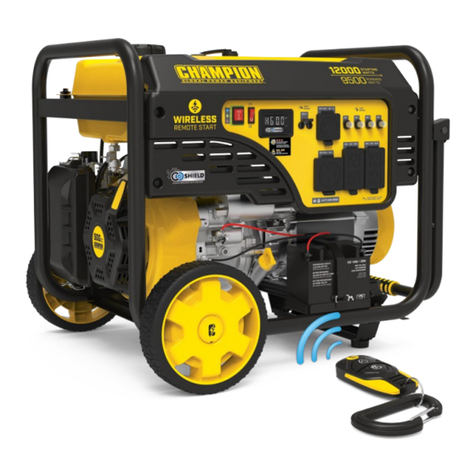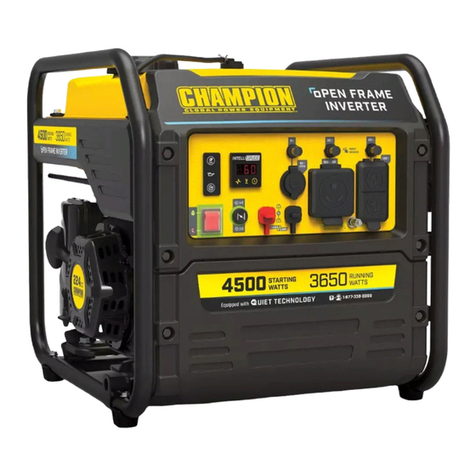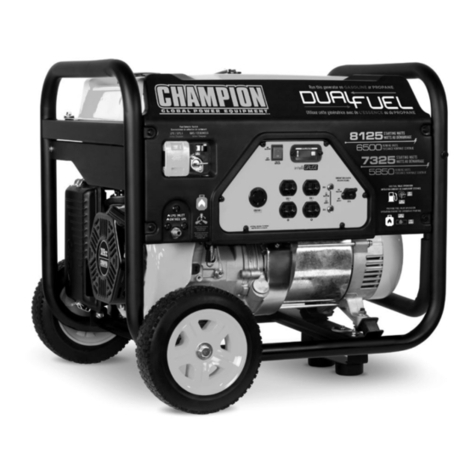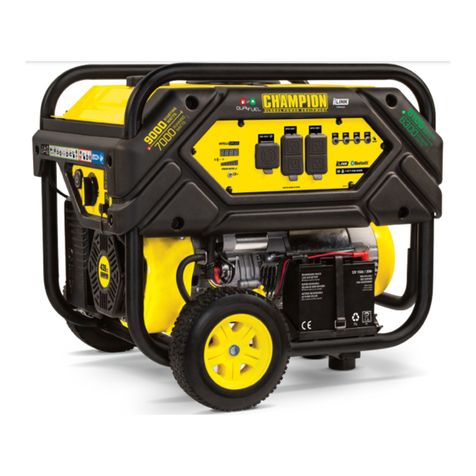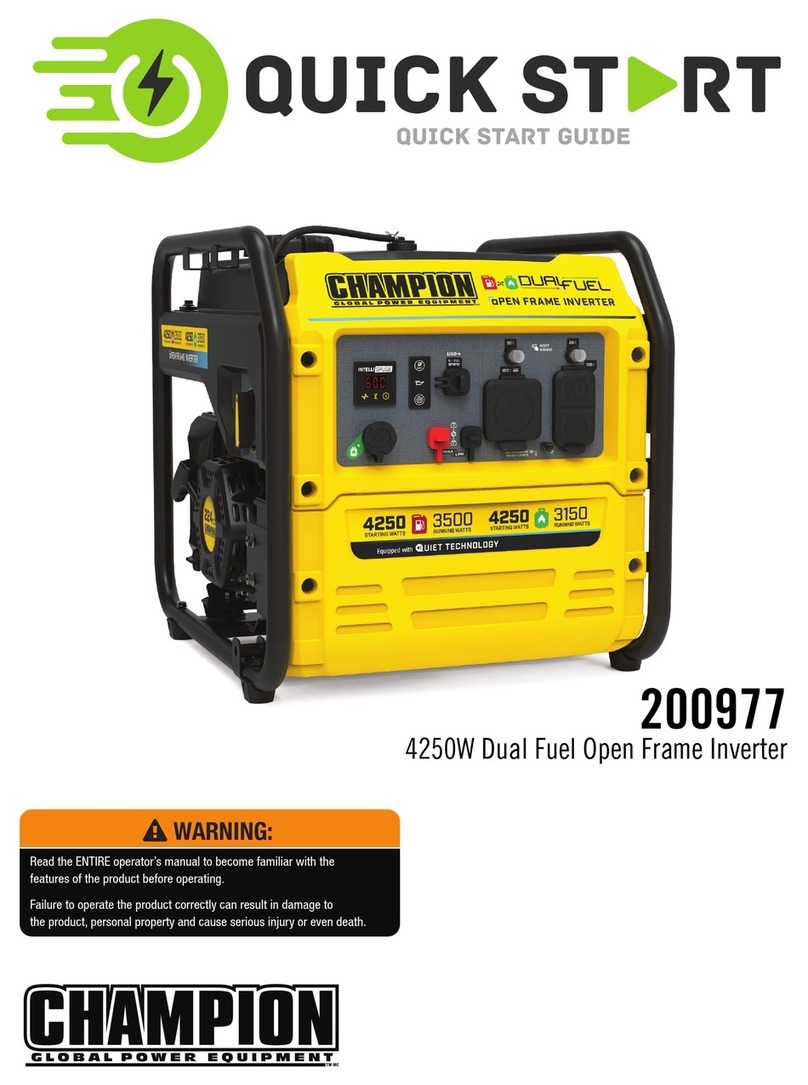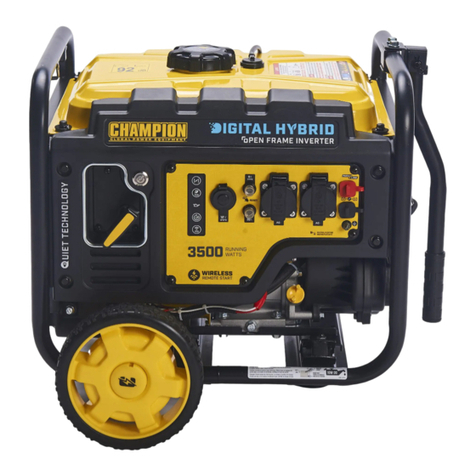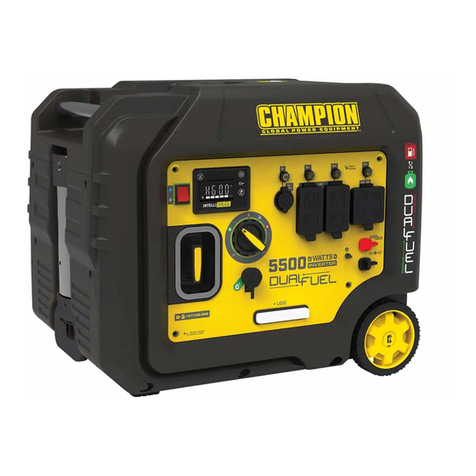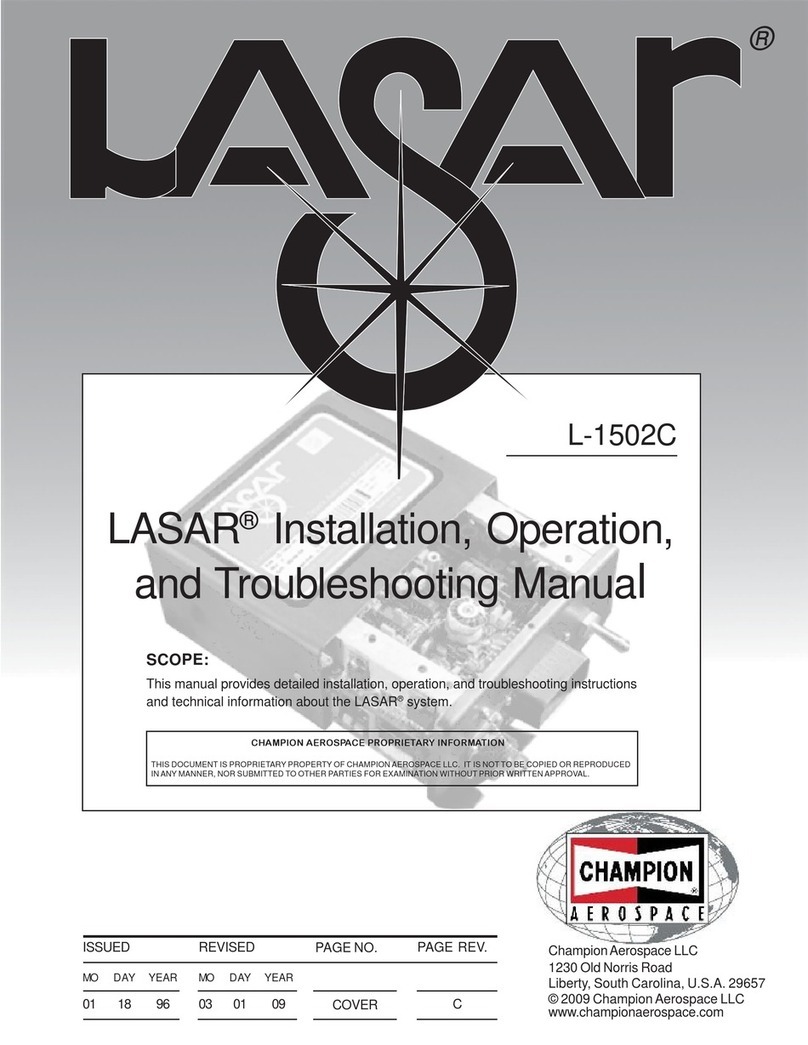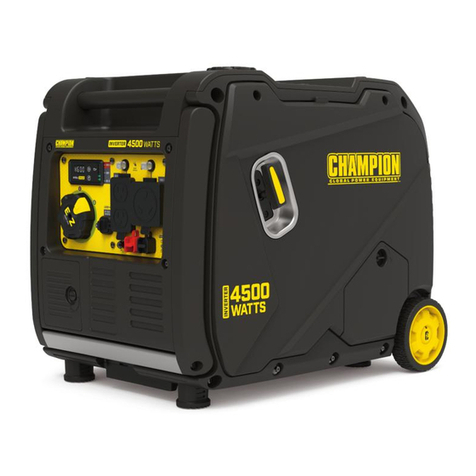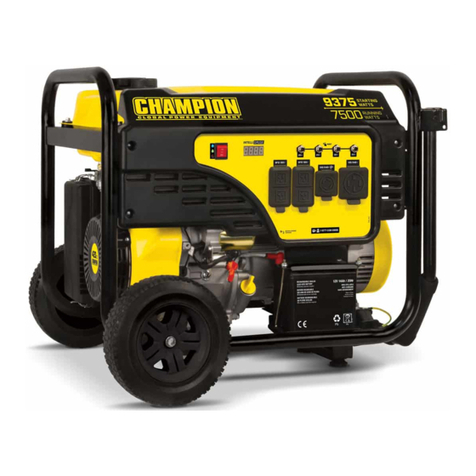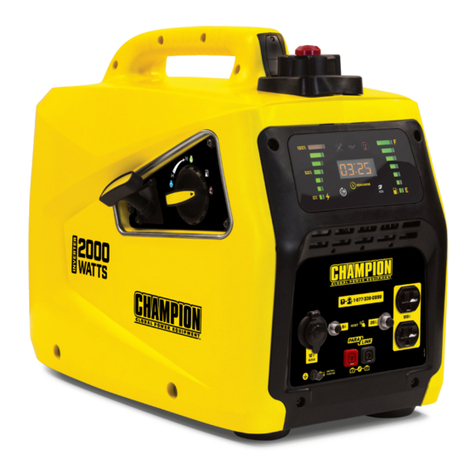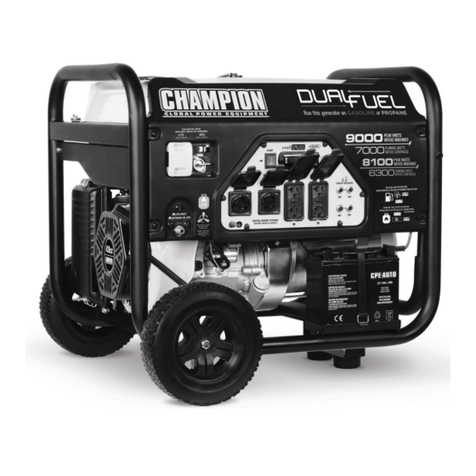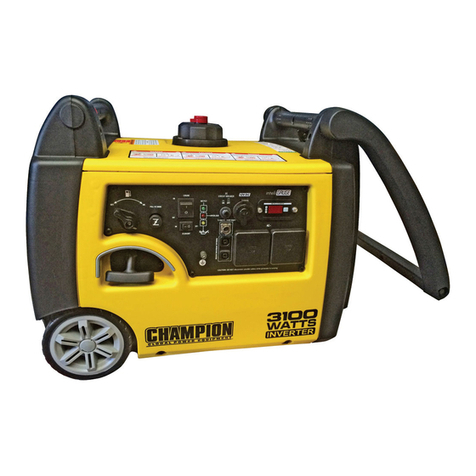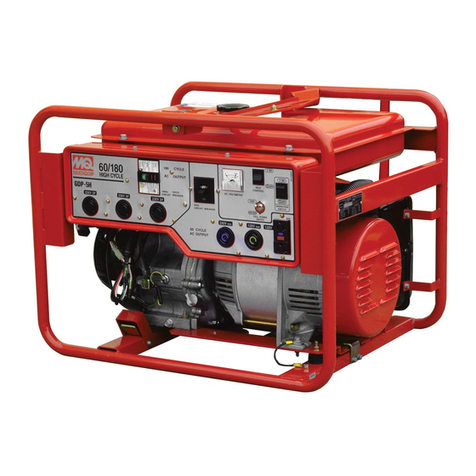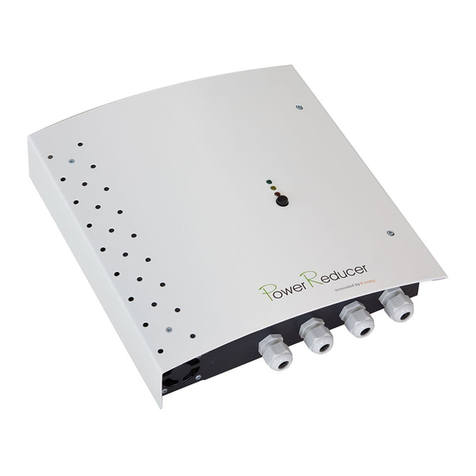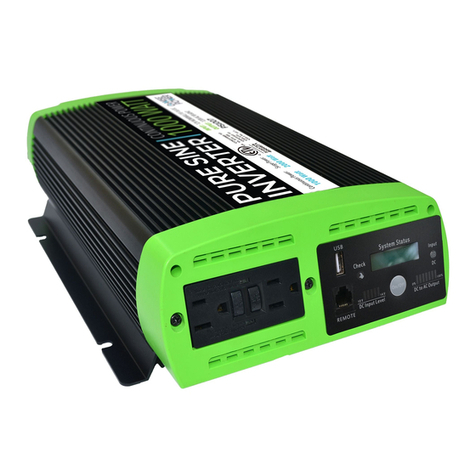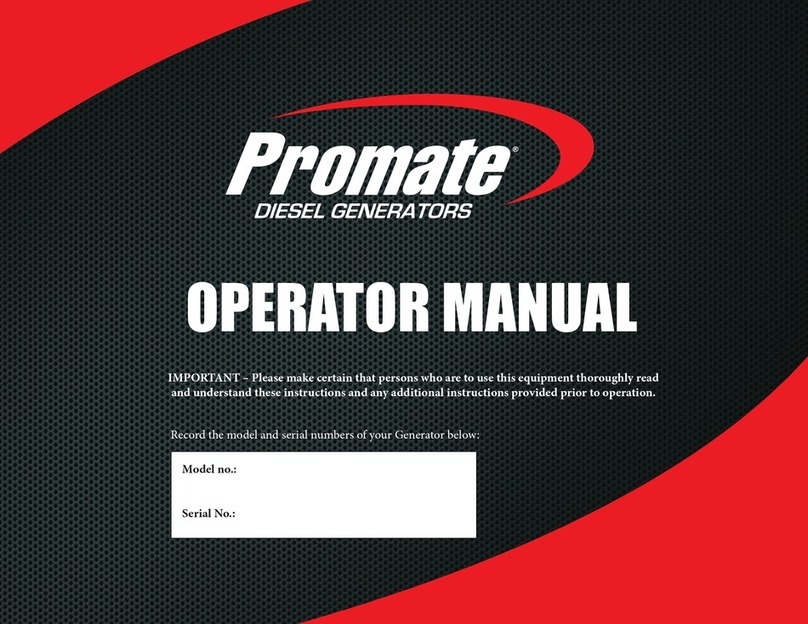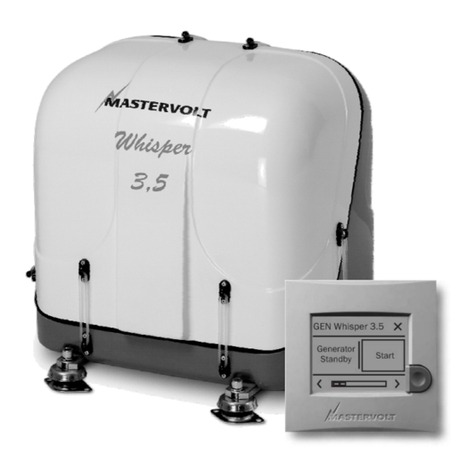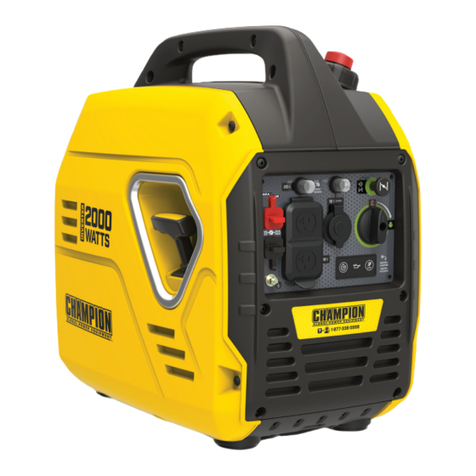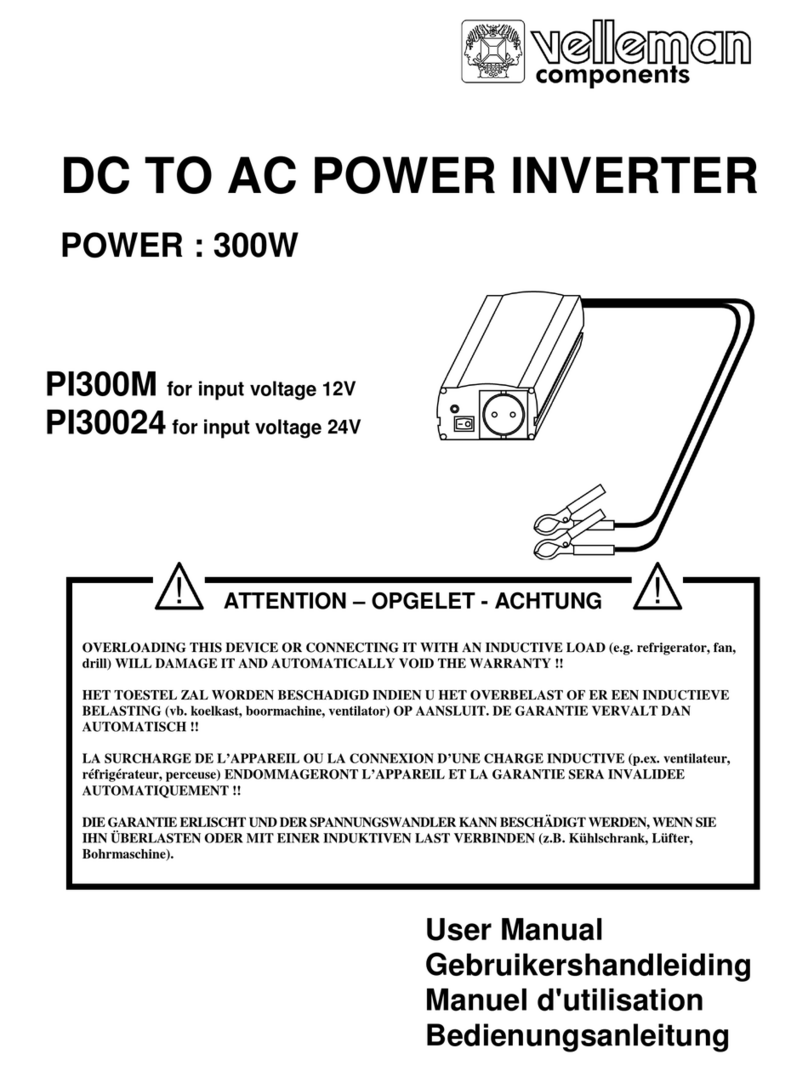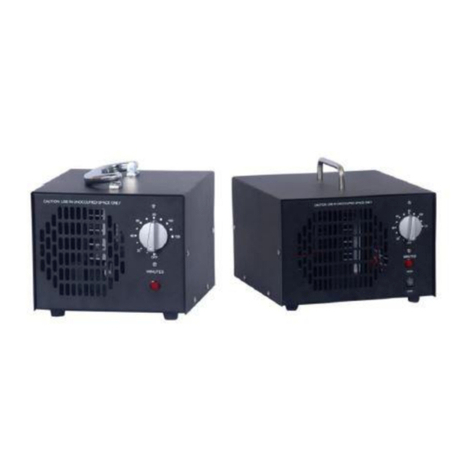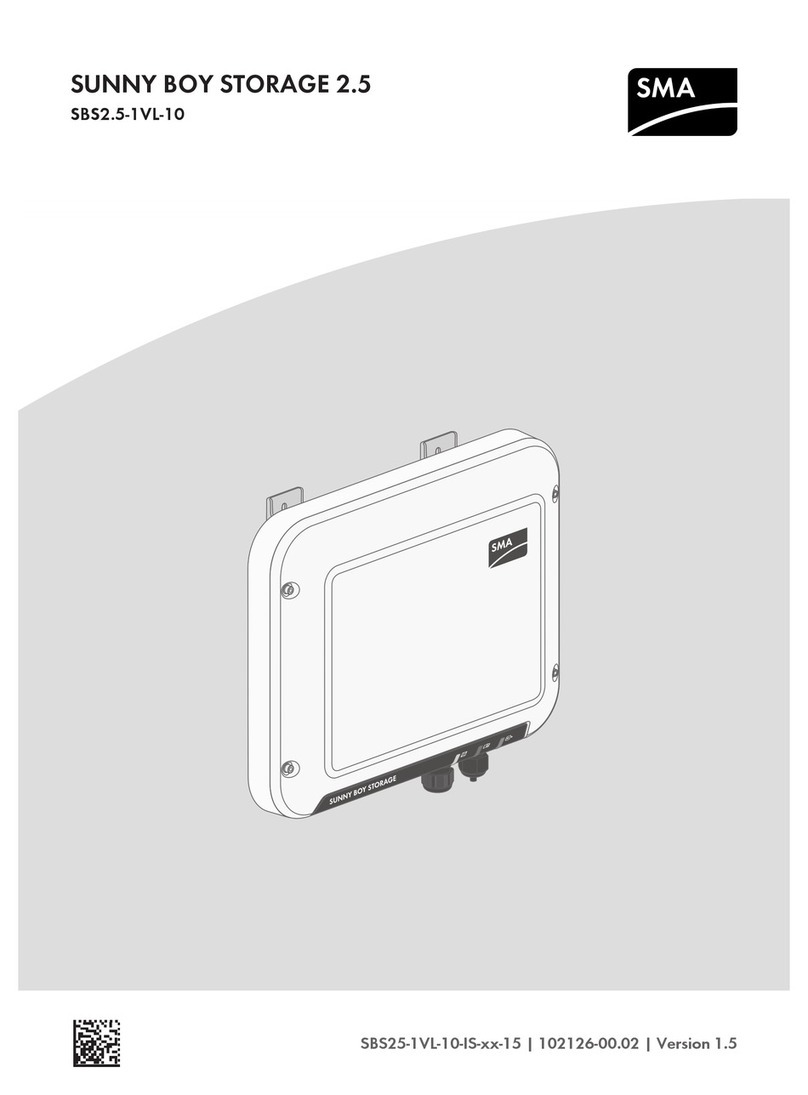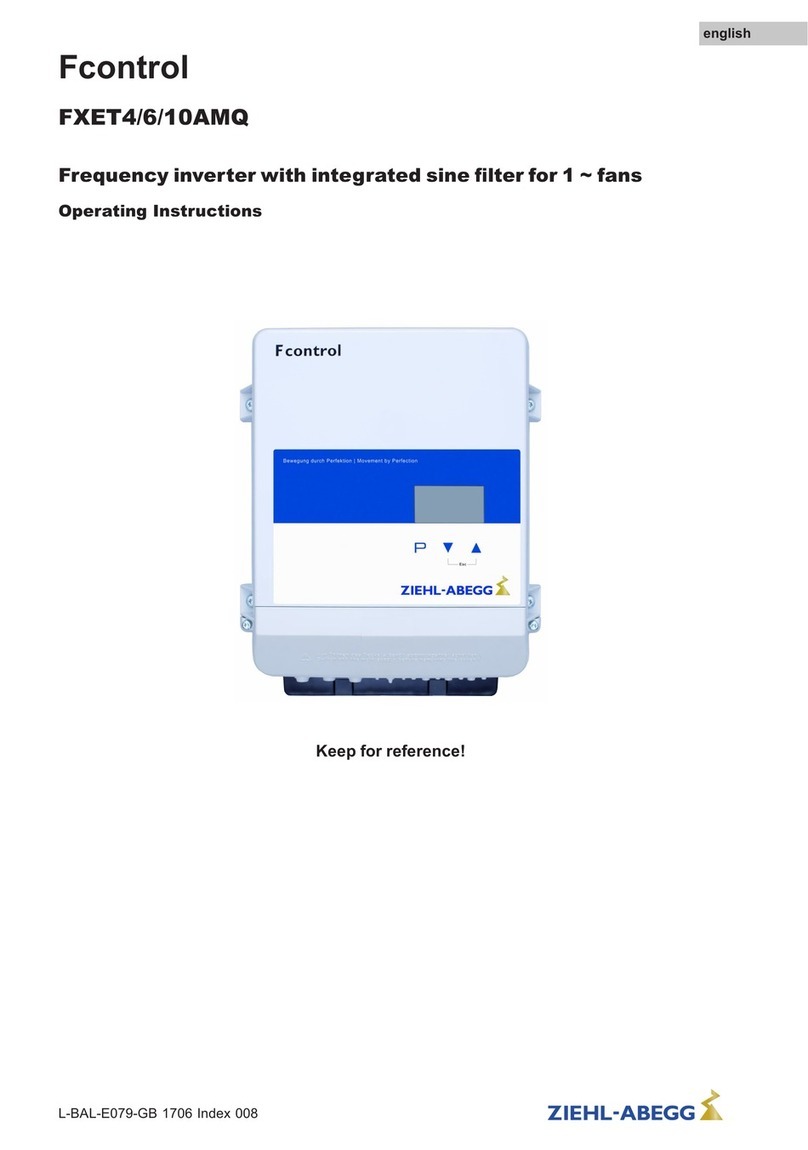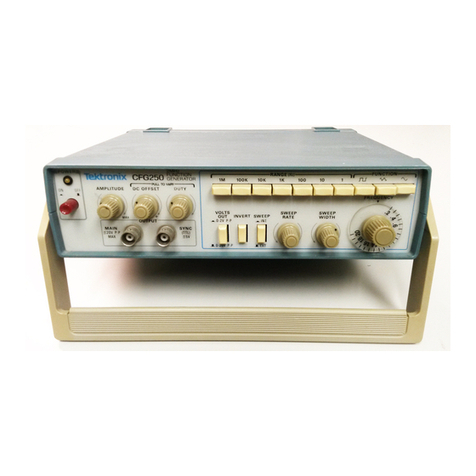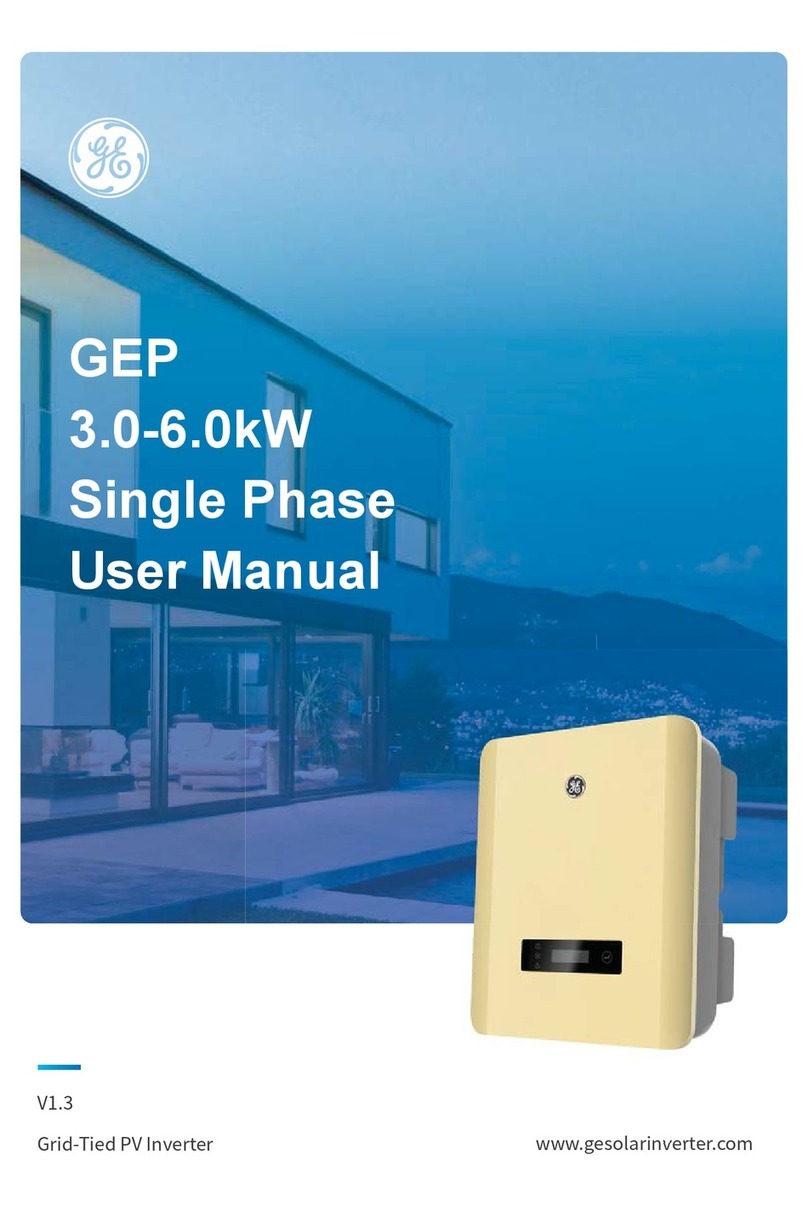
82001i-DF (EU) 82001i-DF (EU)
ASSEMBLY OPERATION
10 11
EN
Add Fuel: Propane (LPG)
1. Confirm the EZ Start dial is in the OFF position.
2. If using a new propane cylinder, remove the plastic cap
from the cylinder valve.
3. Attach the LPG hose assembly (included) to the propane
cylinder valve and hand tighten.
4. Remove the rubber boot covering the propane connection
port on the inverter.
5. Align the plastic finger on the male hose fitting on the
LPG hose assembly with the slot below the female quick
connect coupling on the inverter.
6. Insert the hose fitting into the quick connect coupling and
push in until you hear a “click” and the outside collar of the
quick connect coupling moves forward.
7. Check all connections for leaks by wetting the fittings with
a solution of soap and water. Bubbles which appear or
bubbles which grow indicate that a leak exists. If a leak
exists at a fitting then turn off the valve on the cylinder
and tighten the fitting. Turn the valve back on and recheck
the fitting with the soap and water solution. If the leak
continues or if the leak is not at a fitting then do not use
the generator and contact customer service.
NOTICE
–The LPG hose included with this unit works with
standard 20 and 30 pound LPG tanks.
–Verify the requalification date on the cylinder has not
expired.
–All new cylinders must be purged of air and moisture
prior to filling. Used cylinders that have not been plugged
or kept closed must also be purged.
–The purging process should be done by an LPG supplier.
(cylinders from an exchange supplier should have been
purged and filled properly already).
–Always position the cylinder so the connection between
the cylinder valve and generator inlet won’t cause sharp
bends or kinks in the LPG hose.
CAUTION
Do not allow children to tamper or play with the LPG cylinder
or hose connections.
CAUTION
Use approved LPG cylinders equipped with an OPD
(overfilling prevention device) valve. Always keep the
cylinder in a vertical position with the valve on top and
installed at ground level on a flat surface. Cylinders must
not be installed near any heat source and should not be
exposed to sun, rain, and dust. When transporting and
storing, turn off the cylinder valve and generator LPG valve,
and disconnect the cylinder. Plug the outlet, usually by a
plastic protective cap, if one is available. Keep cylinders
away from heat and ventilated when in a vehicle.
WARNING
If there is a strong smell of LPG: Close valve on the cylinder.
Check all connections for leaks by wetting the fittings
with a solution of soap and water. Bubbles which appear
or bubbles which grow indicate that a leak exists. Do not
smoke or light a cigarette, or check for leaks using a match,
open flame source or lighter. Contact a qualified technician
to inspect and repair an LPG system if a leak is found,
before using the generator.
Grounding
Your generator must be properly connected to an appropriate
ground to help prevent electric shock.
WARNING
Failure to properly ground the generator can result in
electric shock.
A ground terminal connected to the frame of the generator has
been provided (see Controls and Features for terminal location).
For remote grounding, connect of a length of heavy gauge
(12 AWG minimum) copper wire between the generator ground
terminal and a copper rod driven into the ground. We strongly
recommend that you consult with a qualified electrician to
ensure compliance with local electrical codes.
OPERATION
Generator Location
NEVER operate the generator inside any building, including
garages, basements, crawlspaces and sheds, enclosure or
compartment, including the generator compartment of a
recreational vehicle. Please consult your local authority. In
some areas, generators must be registered with the local
utility. Generators used at construction sites may be subject
to additional rules and regulations. Generators should be on
a flat, level surface at all times. (Even while not in operation)
Generators must have at least 5 ft. (1.5 m) of clearance from
all combustible material. In addition to clearance from all
combustible material, generators must also have at least 3 ft.
(91.4 cm) of clearance on all sides to allow for adequate cooling,
maintenance and servicing. Generators should never be started
or operated in the back of a SUV, camper, trailer, in the bed of
a truck (regular, flat or otherwise), under staircases/stairwells,
next to walls or buildings, or in any other location that will not
allow for adequate cooling of the generator and/or the muffler.
DO NOT contain generators during operation. Allow generators
to properly cool before transport or storage.
Install battery-operated carbon monoxide alarms or plug-in
carbon monoxide alarms with battery back-up in your home
according to the manufacturer’s instructions.
Place the generator in a well-ventilated area. DO NOT place the
generator near vents or intakes where exhaust fumes could
be drawn into occupied or confined spaces. Carefully consider
wind and air currents when positioning generator.
Failure to follow proper safety precautions may void
manufacturer’s warranty.
WARNING
Do not operate or store the generator in rain, snow, or wet
weather.
Using a generator or electrical appliance in wet conditions,
such as rain or snow, or near a pool or sprinkler system,
or when your hands are wet, could result in electrocution.
WARNING
During operation the muffler and exhaust fumes produced
will become hot. If adequate cooling and breathing space
are not supplied, or if the generator is blocked or contained,
temperatures can become extremely heated and may lead
to fire.
Grounding
A ground terminal connected to the frame of the generator has
been provided (see Controls and Features for terminal location).
Neutral Floating*
–Neutral circuit IS NOT electrically connected to the frame/
ground of the generator.
–The generator (stator winding) is isolated from the frame
and from the AC receptacle ground pin.
–Electrical devices that require a grounded receptacle pin
connection will not function if the receptacle ground pin is
not functional.
Neutral Bonded to Frame*
–Neutral circuit IS electrically connected to the frame/ground
of the generator.
–The generator system ground connects lower frame
cross-member below the alternator. The system ground is
connected to the AC neutral wire.
* See your model's control panel for specified type of grounding.
Surge Protection
Electronic devices, including computers and many
programmable appliances use components that are designed
to operate within a narrow voltage range and may be affected
by momentary voltage fluctuations. While there is no way to
prevent voltage fluctuations, you can take steps to protect
sensitive electronic equipment.
–Install UL1449, CSA-listed, plug-in surge suppressors on the
outlets feeding your sensitive equipment.
Surge suppressors come in single- or multi-outlet styles.
They’re designed to protect against virtually all short-
duration voltage fluctuations.
Starting the Engine: Gasoline
1. Make certain the generator is on a flat, level surface.
2. Disconnect all electrical loads from the generator. Never
start or stop the generator with electrical devices plugged
in or turned on.
3. Turn the fuel cap vent lever to the “ON” position.

